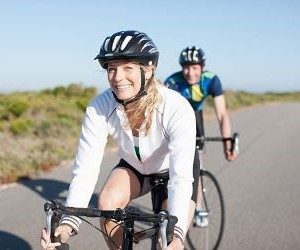HOW DO I MANAGE CRAMPS DURING ULTRA RACES?
Cramps during ultra races are common, unpredictable, and potentially race-ending. Managing them effectively requires a combination of proactive strategies, including proper hydration, electrolyte balance, pacing, and targeted strength training. Understanding the physiological triggers behind cramping allows endurance athletes to implement preventative measures and respond effectively when cramps occur. With structured preparation, ultra-runners can reduce the risk and severity of cramping, ensuring better performance and race enjoyment.

Understanding the causes of cramps
Muscle cramps in ultra races result from multiple physiological and biomechanical factors. They typically occur due to fatigue, dehydration, electrolyte imbalance, or neuromuscular dysfunction. Recognizing the root causes allows athletes to implement strategies that mitigate cramping before it becomes debilitating.
Fatigue-induced cramps
Sustained muscle contractions over long distances lead to localized fatigue. Fatigued muscles lose the ability to maintain normal neural firing patterns, which can trigger involuntary contractions, resulting in cramps. Ultra-distance athletes often experience cramps during the latter stages of races when cumulative fatigue is greatest.
Lower limb muscles, especially calves and quadriceps, are most vulnerable
Repeated eccentric contractions, such as downhill running, exacerbate fatigue
Muscle imbalance increases cramping risk
Electrolyte and hydration factors
Dehydration and electrolyte imbalances, particularly sodium, potassium, magnesium, and calcium deficits, contribute to cramping. Sweating over prolonged efforts can deplete these essential ions, affecting neuromuscular function and leading to involuntary muscle contractions.
Excessive sweating without electrolyte replacement increases risk
Low sodium levels can impair muscle function
Inadequate fluid intake may exacerbate fatigue-related cramping
Preventative strategies
Proactive prevention is key to minimizing cramps during ultra races. This involves structured training, targeted nutrition, hydration, and stretching routines to enhance muscular endurance and resilience.
Strength and endurance training
Muscle conditioning through resistance training and long-distance running reduces fatigue susceptibility. Eccentric exercises, hill workouts, and specific calf strengthening improve neuromuscular control and decrease cramp frequency.
Incorporate calf raises, lunges, and hamstring strengthening
Hill repeats to simulate race conditions
Progressive mileage to build endurance and fatigue resistance
Cross-training for muscular balance
Hydration and electrolyte management
Maintaining optimal hydration and electrolyte balance before and during races is critical. Use targeted sports drinks, electrolyte tablets, and balanced meals to prevent deficits that can trigger cramping.
Consume fluids regularly in small amounts every 15–20 minutes
Monitor urine color as a hydration indicator
Include sodium, potassium, magnesium, and calcium in nutrition plan
Adjust electrolyte intake based on sweat rate and weather conditions
Stretching and flexibility
Regular stretching enhances muscle elasticity, reduces tightness, and improves neuromuscular efficiency. Dynamic stretches pre-race and static stretches post-race support muscle function and recovery.
Pre-race dynamic stretches
Dynamic stretching warms up muscles, increases blood flow, and prepares joints for prolonged activity. Key exercises include leg swings, lunges with rotation, and high knees to activate lower limb muscles effectively.
Leg swings: Front-to-back and side-to-side
Walking lunges with torso rotation
High knees and butt kicks for activation
Post-race static stretches
Static stretching after running aids recovery and reduces delayed onset muscle soreness. Focus on calves, hamstrings, quadriceps, and hip flexors to relieve tension and improve muscle length.
Seated hamstring stretch
Standing calf stretch against a wall
Quadriceps stretch lying on one side
Hip flexor lunge stretch





